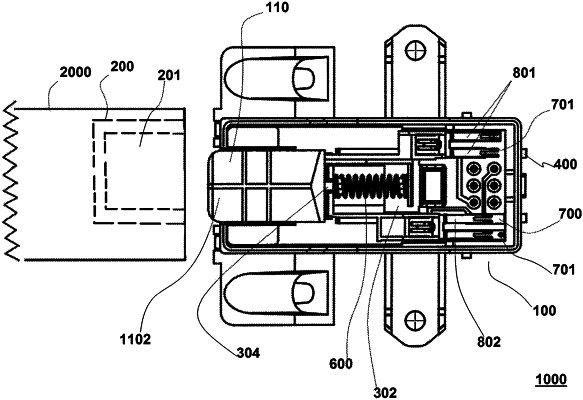| CPC E05B 47/0002 (2013.01) [A47L 15/4259 (2013.01); D06F 37/42 (2013.01); D06F 39/14 (2013.01); E05C 1/006 (2013.01); E05B 2047/0069 (2013.01)] | 20 Claims |

|
1. A device for closing and opening doors and/or hatches of household appliances, said device comprising:
a closing and opening assembly adapted to be fixed to one of a fixed part of an household appliance or a movable hatch of a said household appliance, and said closing and opening assembly including,
a latch linearly movable between a first end-stop position and a second end-stop position and vice versa, said latch configured to engage a corresponding reference member mounted on said other of said fixed part or movable hatch, and
a slider movable along a direction parallel to said direction of movement of said latch, the slider translatable between a first end-stop own position thereof and a second end-stop own position thereof and vice versa, said latch configured to pull said slider from said first end-stop own position to said second end-stop own position thereof against an elastic biasing means,
wherein said slider, during a translation thereof from said first end-stop own position thereof to said second end-stop own position thereof, can be locked in a third intermediate own position thereof between said first end-stop own position thereof and second end-stop own position thereof, and
wherein, with said slider locked in said third intermediate own position thereof, said latch, upon reaching said second end-stop position, is caused via said elastic biasing means to return to said first end-stop position and becomes locked in a third intermediate position between said first and second end-stop positions.
|